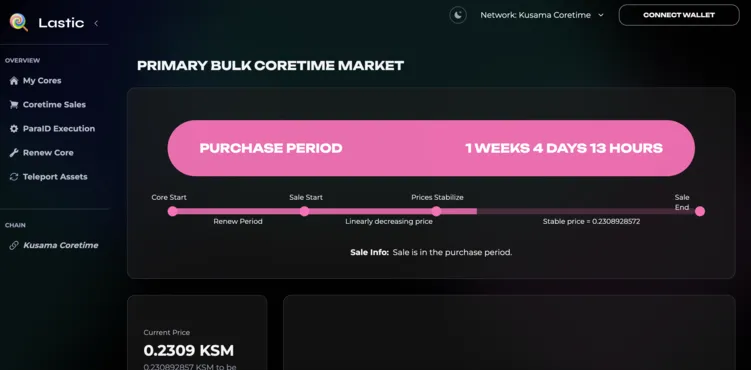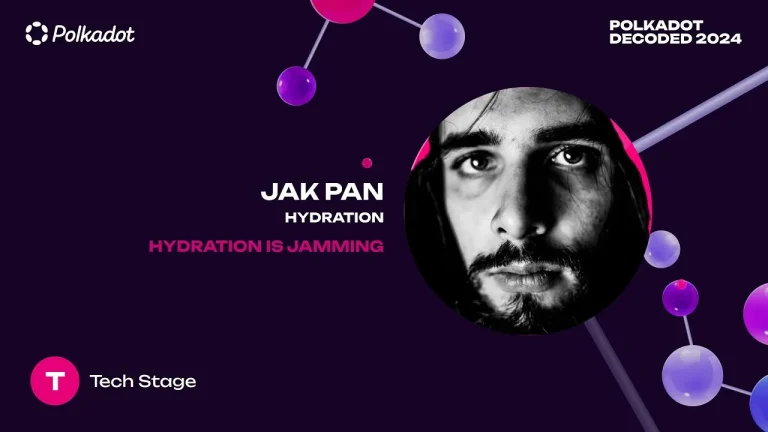Polkadot is pioneering a transformative approach to resource allocation with the introduction of Agile Coretime. This innovative model promises to revolutionize how blockchain projects access and utilize secure blockspace, offering unprecedented flexibility, efficiency, and cost-effectiveness. This guide provides a comprehensive overview of Polkadot’s Agile Coretime sales, covering everything from the basics of coretime to the intricate details of participating in coretime sales.
Understanding Polkadot Agile Coretime
Agile Coretime is a dynamic and market-driven approach that allows projects to purchase and manage computational resources, referred to as “cores,” on the Polkadot network. These cores are essential for securing parachain blocks and ensuring the smooth operation of decentralized applications (dApps) and appchains. Unlike the static parachain leasing model of Polkadot 1.0, Agile Coretime introduces flexible, on-demand access to blockspace, empowering developers to optimize resource usage according to their specific needs.
Key Components of Agile Coretime
- Cores: Cores represent the virtual computational resources provided by the Polkadot Relay Chain. These resources are allocated to secure the blocks of parachains.
- Coretime: Coretime refers to the duration for which a core is allocated, measured in relay chain blocks. It is the primary unit of resource allocation in the Agile Coretime model.
- Bulk Coretime: Bulk coretime is a fixed duration of continuous coretime, represented by a non-fungible token (NFT). These NFTs can be split, shared, or resold, allowing for flexible management of resources.
- On-demand Coretime: On-demand coretime enables the authoring of parachain blocks as needed, with allocation determined through real-time bidding. This option is ideal for projects that require resources on a more ad-hoc basis.
- Coretime Chain: The Coretime Chain is a system parachain responsible for managing the sale, allocation, and scheduling of coretime on the Polkadot network. It plays a crucial role in facilitating the efficient distribution of resources.
How Agile Coretime Works
Agile Coretime sales occur on the Coretime Chain and are divided into two main periods: the Renewal Period and the Sale Period.
- Renewal Period: During this phase, existing holders of bulk coretime can renew their allocation, ensuring continuity of access to computational resources.
- Sale Period: Following the Renewal Period, the Sale Period begins, starting with a Price Discovery phase. In this phase, a Dutch auction is used to determine the equilibrium price for coretime, followed by a Fixed Price phase where coretime is sold at the established price.
Agile Coretime also supports advanced features like splitting and interlacing, which allow holders to divide and manage their coretime allocations more granularly. Additionally, elastic scaling (currently under development) will enable projects to seamlessly scale by acquiring multiple cores for high-demand tasks.
How to Buy Polkadot Coretime
To participate in Agile Coretime sales, projects must follow a straightforward process:
- Register a ParaID: The first step is to register a ParaID, which is necessary for acquiring coretime on the Polkadot network.
- Reserve Funds: Projects must reserve the necessary funds, typically in DOT (Polkadot’s native token), to participate in coretime sales.
- Place a Bid or Purchase Coretime: Depending on whether the project is acquiring bulk coretime or on-demand coretime, the next step involves placing a bid during the Price Discovery phase or purchasing coretime during the Fixed Price phase.
- Manage Coretime Allocation: Once coretime is acquired, it can be managed through the Coretime Chain. This includes splitting, sharing, reselling, or renewing the coretime as needed.
Benefits of Polkadot Agile Coretime
Agile Coretime offers several significant advantages for blockchain projects:
- Flexibility: Projects can acquire only the resources they need, reducing waste and optimizing costs.
- Cost Predictability: By securing bulk coretime, projects can protect themselves against price spikes during periods of high demand, enabling better financial planning.
- Democratized Access: On-demand coretime lowers barriers to entry, making it easier for new projects to access the Polkadot network.
- Secondary Markets: The ability to resell coretime on secondary markets provides additional flexibility and opportunities for cost recovery.
Risks and Considerations
While Agile Coretime presents numerous opportunities, as mentioned in this first study on coretime sales by OnlyDeFiGuy, it also introduces certain risks:
- Market Volatility: The price of coretime is subject to market dynamics, which can lead to fluctuations and potential cost increases.
- Resource Planning: Proper planning is essential to ensure that projects acquire and use coretime efficiently, as unused coretime cannot be carried over or refunded.
- Technical Complexity: Participating in coretime sales and managing allocations requires a deep understanding of the Polkadot ecosystem and the Coretime Chain.
Polkadot Coretime Marketplaces: Lastic and RegionX
To further enhance the flexibility and efficiency of blockspace allocation, Polkadot introduces marketplaces like Lastic and RegionX. Lastic provides a platform for buying and selling blockspace, allowing users to access coretime flexibly.

RegionX, on the other hand, offers a decentralized marketplace where blockspace is traded as NFTs, enabling customized usage patterns and dynamic pricing. Both platforms leverage Polkadot’s innovative coretime model, opening new opportunities for developers and projects to optimize their resource management in the Polkadot ecosystem.


Conclusion
Polkadot’s Agile Coretime represents a significant leap forward in blockchain resource allocation, offering a more flexible, efficient, and market-driven approach to securing blockspace. By understanding the components, processes, and benefits of Agile Coretime, projects can effectively participate in coretime sales and leverage the Polkadot network’s full potential.
As Polkadot continues to evolve, Agile Coretime will play a critical role in enabling scalable, high-performance decentralized applications, driving innovation, and ensuring that the network remains at the forefront of Web3 development.
Related content:
- What is Agile Coretime, Dablock.
- Introduction to Agile Coretime, Polkadot Wiki.
- Core Time Sales on Polkadot: A New Era of Resource Allocation Assets, OnlyDeFiGuy.








